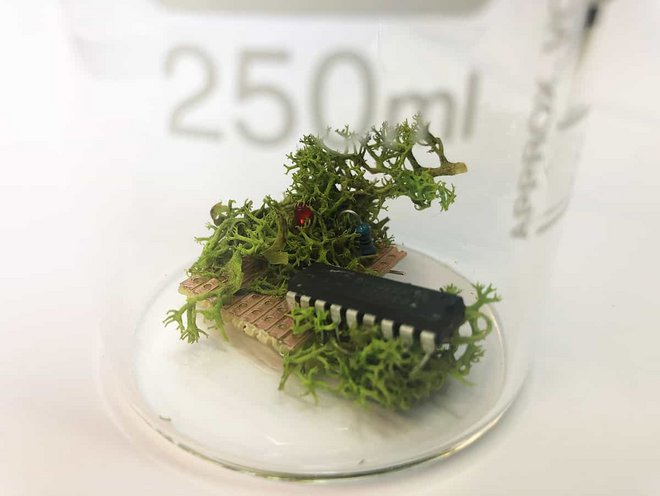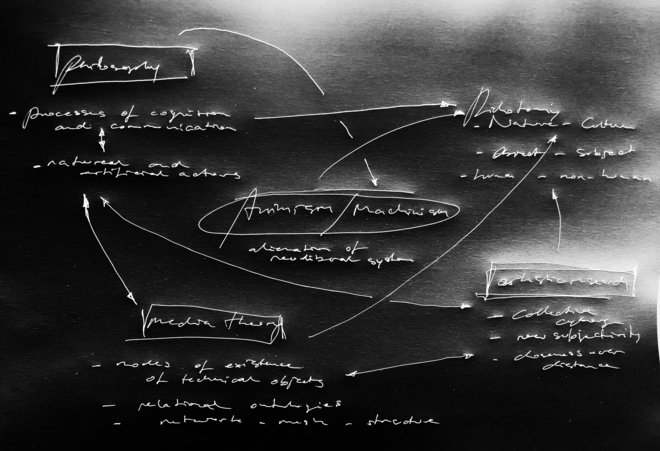The transdisciplinary research project ‘Animism/Machinism: Configurations of Critique between Science, Art and Technology’ addresses a question which is ever more frequently asked today: Are there such things as ‘living’ machines and ‘intelligent’ plants? The project combines methods from the history of science and technology with philosophical-critical approaches and artistic-experimental perspectives.
In everyday life, we are increasingly confronted with intelligent technologies such as virtual assistants, self-parking cars and household robots. They can create the impression that we are dealing with devices that possess an individual personality. We interact and communicate with Siri, Alexa & Co. as if they were living, animated companions. In parallel, more and more knowledge from the life sciences is being made public about the fact that intelligence and communication are not limited to humans and a few animal species. Recently, the plant intelligence research in particular has received growing attention. As is well known today, for example, trees are socially networked by a ‘wood wide web’ of soil fungi that allows the sharing of information and goods.
These developments and insights make our world appear more than ever to be an animated, indeed ‘animistic’, world. Taken together they constitute one of the two starting points for the transdisciplinary research project ‘Animism/Machinism: Configurations of Critique between Science, Art and Technology’, which is based at the Chair of Media Theory and History of Science at the Bauhaus-Universität Weimar and is funded by the Deutsche Forschungsgemeinschaft (DFG). The project team consists of Henning Schmidgen, the holder of the Chair, the philosopher Mathias Schönher and the artist Jenny Brockmann. In accordance with the distinct but complementary expertise of the team members, the project is characterized by a combination of approaches from recent history of science and technology, philosophical analysis and critique, and artistic research. Given its experimental nature, resulting from the use of artistic means, the project aims to establish a new way of transdisciplinary research that goes beyond purely academic inquiry. By way of exhibitions and workshops, for example, the involvement of the public in the research process will play a crucial role in the project’s implementation.
The fact that animistic positions are gaining prominence in the humanities constitutes the project’s second point of departure. As a response to the ecological crisis of the Anthropocene, there are more and more claims for a redefined, critical animism, drawing primarily on Actor-Network Theory (Bruno Latour) and New Materialism (Rosi Braidotti, Karen Barad, Jane Bennett). This New Animism takes leave from the prevailing understanding of animism shaped by nineteenth-century ethnology with its Western colonial gaze and is, instead, intended to serve as a conceptual paradigm for overcoming the dichotomy of human culture and nonhuman nature that is fundamental to Western modernity. The research project therefore traces the current debate on a redefined animism back to one of their critical points of origin, namely the philosophy of machinism developed by Gilles Deleuze and Félix Guattari, which connects to the vitalist philosophies of technology by Gilbert Simondon and Georges Canguilhem, among others.
The research questions address three topics. The project explores, firstly, the significance of a redefined animism for research in media studies and, in this context, the often invoked technology’s ‘life of its own’. Secondly, it investigates how the dichotomy of nature and culture is overcome through an animistic conception of the world, and the resulting possibility for a reframing of critique of our capitalist economic and social order. And thirdly, the project examines the potential to create a constructive dialogue between media studies and media art by extending the engagement to aesthetic practice and artistic research in accordance with animistic positions.



